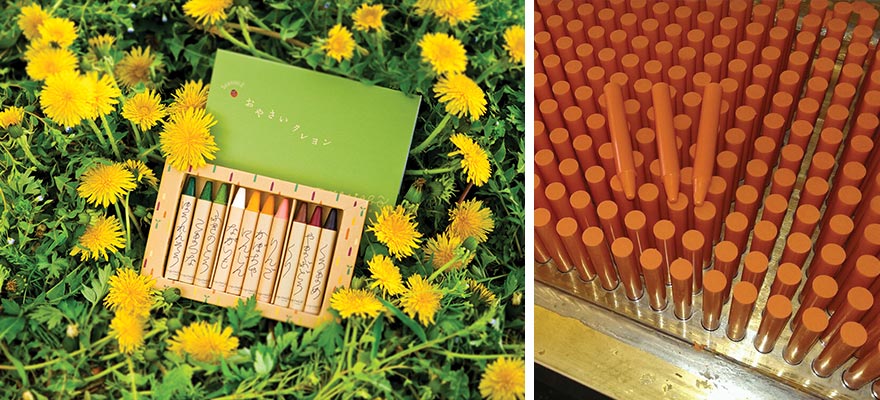Home > Highlighting JAPAN >Highlighting Japan June 2014>Revitalizing Japan's Regions
Highlighting JAPAN
Revitalizing Japan's Regions
Crayons Made of Vegetables
Portraying Aomori's Charms with Vegetabo

"I felt that even though Aomori had lots of great agricultural products, we were having trouble promoting them outside the prefecture. This project came about through my desire to contribute to my hometown in my own way, as someone pursuing a career in design who has enjoyed drawing pictures from an early age," explains Naoko Kimura, head of a design firm in Aomori City called Design Works STmind. That is why last year, to convey the appeal of the leading Japanese agricultural region of Aomori to a wider audience, she began developing and marketing Vegetabo (vegetable crayons), which incorporate the colors of actual vegetables.
Moving away from the concept of traditional crayon colors, Kimura emphasizes the natural coloring displayed by vegetables and has named each crayon after a vegetable, such as Pumpkin, Spinach and Apple.
"Even the same vegetable varies in color individually," notes Kimura. "Vegetabo crayons enable you to enjoy the actual colors of the vegetables harvested at the time. The lack of a blue color is another aspect of Vegetabo crayons, although I hope that people will enjoy them even without a blue one."
The ingredients of Vegetabo crayons are practically the same as in food. In place of wax, rice bran oil extracted during rice polishing is used, and the pigments are the same used in food additives, so the crayons are safe even if a child eats one by accident. Kimura says she has received plenty of comments from families who have used Vegetabo, and they say the crayons have given them the chance to enjoy talking about vegetables as a family.
Whenever possible, the crayons are made from the portions of vegetables destined for disposal. "As much as forty percent of vegetables reportedly end up as waste after production. Some of the vegetables are excluded from distribution as substandard because they are misshapen, bruised or the like. And some parts, such as the skin, are removed in processing, so farmers spend a lot of money on disposal. By making good use of these discarded vegetables, we hope to make the product resource-efficient and environmentally friendly as well," Kimura says.
She explains that the Chestnut color, for example, is made from the skins discarded during the manufacture of chestnut paste, while Grape comes from the leftovers after squeezing grapes for juice. Green Onion is produced from the top of the plant that is cut off at shipping time, and Chinese Yam comes from the skin and other discarded parts in the making of grated yam. The reason the Chinese yam-colored crayons have a light brown tinge instead of pure white is because that is the natural color of Chinese yams.
"I'd like to create an event where children can get to know local farmers and vegetables through these crayons," Kimura says of the future. "By sending Vegetabo out across Japan, I hope to create a new business model for my beloved town of Aomori, where I was born and raised, and contribute to the creation of jobs and promotion of agriculture, industry and tourism."
"Eventually, I want to make crayons using vegetables from all over Japan. Since vegetable colors vary by growing region, there are some vegetables that can only be harvested in certain places. If we gather them all together, we will be able to familiarize children around the world with the 'colors of Japan'," she adds, further elaborating on her dreams for the future.
© 2009 Cabinet Office, Government of Japan






